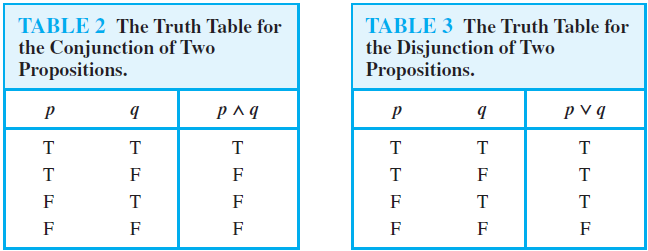SKEDSOFT
DEFINITION 3 Let p and q be propositions. The disjunction of p and q, denoted by p ∨ q, is the proposition “p or q.” The disjunction p ∨ q is false when both p and q are false and is true otherwise.
Table 3 displays the truth table for p ∨ q.

The use of the connective or in a disjunction corresponds to one of the two ways the word or is used in English, namely, as an inclusive or. A disjunction is true when at least one of the two propositions is true. For instance, the inclusive or is being used in the statement “Students who have taken calculus or computer science can take this class.”
Here, we mean that students who have taken both calculus and computer science can take the class, as well as the students who have taken only one of the two subjects. On the other hand, we are using the exclusive or when we say
“Students who have taken calculus or computer science, but not both, can enroll in this class.”
Here, we mean that students who have taken both calculus and a computer science course cannot take the class. Only those who have taken exactly one of the two courses can take the class. Similarly, when a menu at a restaurant states, “Soup or salad comes with an entrée,” the restaurant almost always means that customers can have either soup or salad, but not both. Hence, this is an exclusive, rather than an inclusive, or.